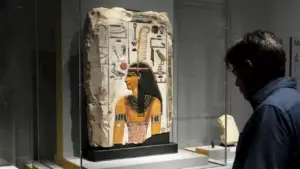
The process of ore formation is a complex journey that begins long before mining operations commence. In this exploration of geology, we examine the various natural processes that contribute to the creation of ore deposits, essential for extracting valuable resources like copper and gold. Understanding these processes sheds light on how elements of interest are formed and ultimately harvested.
Defining Ore and Its Value
The term “ore” lacks a strict scientific definition; instead, it refers to rocks that contain elements or compounds valuable to human industry. The economic viability of these materials can shift over time. For instance, prospectors today pursue copper from porphyry deposits with concentrations as low as 1000 ppm (0.1%), a threshold that was once deemed uneconomical. Advances in mining technology and fluctuating commodity prices have altered perceptions of what constitutes an ore deposit.
One notable tale related to mining history involves a street in Kirkland Lake, Ontario, which allegedly used waste rock from local gold mines for its pavement. This story, though apocryphal in terms of economic reprocessing, illustrates the changing nature of ore value; what was once considered waste can become a source of profit when market conditions change.
The Role of Geological Processes in Ore Formation
To understand how ores form, we must delve into geological processes that have shaped the Earth over billions of years. The **Late Heavy Bombardment**, occurring between 3.8 to 4.1 billion years ago, saw a surge of impacts on planetary bodies, including Earth. These impacts contributed to enriching the crust with metals. However, it is important to note that while these events introduced metals, the rocks from that era are scarce on the surface today and are not typically ore-bearing.
The geological processes of volcanism play a crucial role in ore formation. Igneous rocks, which arise from the cooling of magma or lava, may transport metals to the surface. Yet, not all volcanic activity leads to profitable ore. The enrichment of magma through geochemical processes is essential for creating economically viable deposits.
One of the most significant geological formations related to ore is the **kimberlite pipe**. These formations, created through explosive volcanic activity, transport minerals like diamonds from deep within the Earth. While not all kimberlite pipes yield diamonds, they remain a primary source due to the extreme pressure conditions required for diamond formation.
Magmatic Ore Formation: Sulfide Deposits
The presence of sulfur is another critical factor in economic ore formation. Sulfur can extract metals from magma, forming sulfide minerals that are easier to refine. Notable examples of sulfide deposits are found in regions like **Norilsk, Russia**, which produces significant quantities of nickel and platinum group elements. The geological history of Norilsk is tied to the ancient **Siberian Traps**, where volcanic activity released vast amounts of rock, enriched by sulfur and other elements.
Similarly, the **Sudbury Basin** in Canada, known as one of the largest hard-rock mining centers globally, showcases the importance of sulfur in ore formation. The basin’s history is linked to a significant meteorite impact that melted surrounding rock, allowing sulfur to interact with metals and create economically valuable sulfide deposits.
Layered igneous intrusions, such as those in the **Bushveld Igneous Complex** in South Africa, further illustrate the complexity of ore formation. These formations undergo fractional crystallization, where different minerals crystallize at varying temperatures, concentrating valuable metals like chromium and platinum.
The continuous study of these geological processes is essential for future explorations and mining endeavors, particularly on other celestial bodies. As research progresses, the potential for discovering economically viable ore deposits on locations like the Moon and Mars becomes increasingly plausible.
In conclusion, the formation of ore is a multifaceted process influenced by geological history, chemical interactions, and technological advancements. Understanding these factors not only enriches our knowledge of Earth’s resources but also informs future mining practices worldwide.






